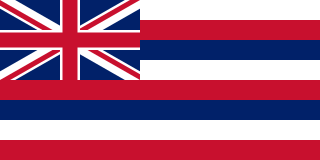 W
WThe Republic of Hawaiʻi was a short-lived one-party state in Hawaiʻi between July 4, 1894, when the Provisional Government of Hawaii had ended, and August 12, 1898, when it became annexed by the United States as an organized incorporated territory of the United States. In 1893 the Committee of Public Safety overthrew Kingdom of Hawaii Queen Liliʻuokalani after she rejected the 1887 Bayonet Constitution. The Committee of Public Safety intended for Hawaii to be annexed by the United States but President Grover Cleveland, a Democrat opposed to imperialism, refused. A new constitution was subsequently written while Hawaii was being prepared for annexation.
 W
WThe Newlands Resolution was a joint resolution passed on July 4, 1898, by the United States Congress to annex the independent Republic of Hawaii. In 1900, Congress created the Territory of Hawaii.
 W
WThe Hawaiian rebellions and revolutions took place in Hawaii between 1887 and 1895. Until annexation in 1898, Hawaii was an independent sovereign state, recognized by the United States, United Kingdom, France and Germany with exchange of ambassadors. However, there were several challenges to the reigning governments of the Kingdom and Republic of Hawaii during the 8 1⁄2-year (1887–1895) period.
 W
WThe Kūʻē Petitions of 1897 were a protest against the annexation of Hawaii by the United States. Also referred to as the "monster petition". It was organized by Hui Aloha ʻĀina.
 W
WThe Leper War on Kauaʻi also known as the Koolau Rebellion, Battle of Kalalau or the short name, the Leper War. Following the overthrow of the Kingdom of Hawaii, the stricter government enforced the 1865 "Act to Prevent the Spread of Leprosy" carried out by Attorney General and President of the Board of Health William Owen Smith. A revolt broke out in Kauaʻi, against the forced relocation of all infected by the disease to the Kalaupapa Leprosy Colony of Kalawao on the island of Molokai.
 W
WThe Newlands Resolution was a joint resolution passed on July 4, 1898, by the United States Congress to annex the independent Republic of Hawaii. In 1900, Congress created the Territory of Hawaii.
 W
WThe Provisional Government of Hawaii, abbreviated "P.G.", was proclaimed after the coup d'état on January 17, 1893, by the 13-member Committee of Safety under the leadership of its chairman Henry E. Cooper and former judge Sanford B. Dole as the designated President of Hawaii. It replaced the Kingdom of Hawaii after the overthrow of Queen Liliʻuokalani as a provisional government until the Republic of Hawaii was established on July 4, 1894.